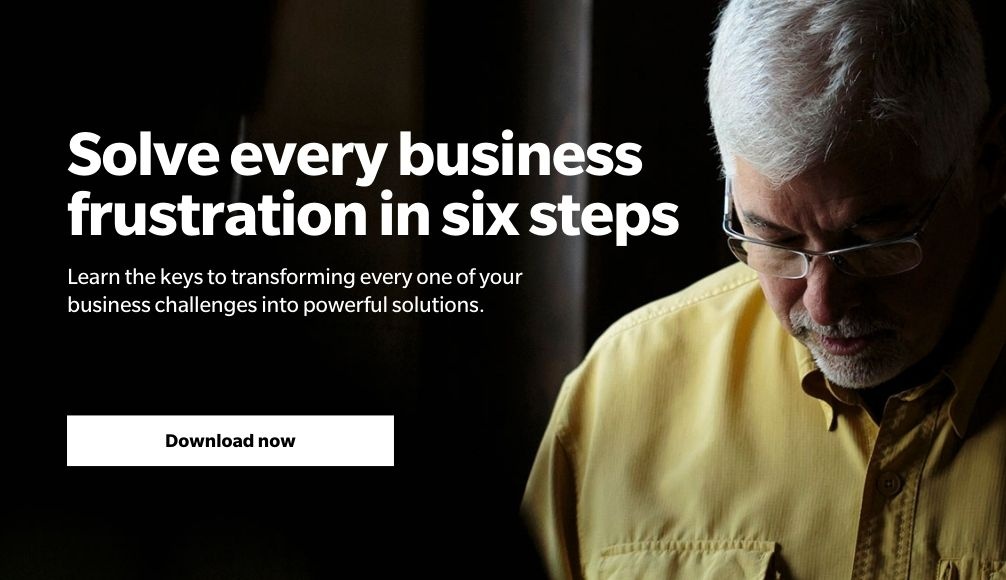Limiting beliefs get the best of all of us from time to time, especially when facing problems at a time when you’re way overextended. When you need a quick, efficient solution, your approach may look like this: identify the problem based on the symptom you’re seeing, determine a symptom-based solution, employ that solution. Logical, right?
The truth is, this process is unproductive. Creating a fast solution based on symptoms can blind you to options that may actually be much more successful solutions for the issue. Most problems have numerous possible causes, and any solution based solely on the symptoms could result in making the problem worse.
Here’s an example: Say you have a houseplant that’s typically thriving. One day you walk by and see its leaves starting to drop. The plant looks wilted, and you can’t remember when you last watered it. This line of thinking reasons that your plant must be wilted because it doesn't have enough water. Embedded within the thought about the problem—my plant is wilted because I haven’t watered it—is an obvious (but not necessarily correct) solution—my plant will stop being wilted if I water it.
So you water it. That doesn’t seem to help, so the next day you water it again—and ultimately, you end up drowning your plant. By embedding your presumed solution within that symptom and ignoring other possible issues—like too much or little light, or a nutrient imbalance—you’ve exacerbated the problem beyond repair.
Any time you can only think of one solution, that’s a reasonable indicator that you’re stuck in an unproductive thought pattern.
How do you break out of that pattern? By starting to notice how you frame problems to yourself, and then opening your thinking to more possibilities.
Examine how you frame problems
Each time you encounter a problem, how you frame it will influence your ability to find a solution that works. Here are the several ways we tend to frame problems:
1. Attributing the problem to yourself
Say your company’s sales have taken a dip in the second half of the year, and your first thought is: I haven’t been doing as many of the sales calls myself these last quarters. That thought will guide the steps you take to solve the issue. In your mind, the source of the problem is that you’ve stepped away from sales. Your solution: Drop everything in other parts of the business to go back to driving sales, pulling yourself from where you’re needed elsewhere.
2. Attributing the problem to someone else
Maybe your salespeople weren’t as well trained as you thought. Maybe they don’t know how to talk about the value of your product or service. You assume they aren’t skilled enough to get the conversion rates that you need to meet your revenue goals. You get angry and frustrated and feel lost with how to fix this underperformance.
When you frame problems as coming from outside of you, you’ve put yourself in a powerless position. In your mind, the source of your sales problem is all rooted in employee inefficiency. You might spend time unnecessarily trying to put systems in place that address what you assume to be the cause of the problem, like adding more training to your sales team’s schedule, pulling them away from their primary role of converting leads. This can create a rippling and demoralizing effect.
3. Considering the problem objectively
When you attribute a problem to yourself, you assume that the only solution involves changing the way you’re doing things. When you attribute it to someone else, you put the responsibility of solving the problem on another person or organization, assuming there’s nothing you can do to solve it on your own.
But when you take the problem at face value—sales are down—you place no limitations on the possible solutions. You can begin troubleshooting without the bias that goes along with embedding a solution within how you’re framing the problem. Your mind is now open to all the possibilities that could exist: Has there been a shift in the market? Is there something amiss in your customer fulfillment that’s deterring customers from coming back? Is your marketing message bringing in your ideal prospects? The more objectively you can think about a problem, the more quickly and thoroughly you can solve it.
Practice asking open-ended questions
An unproductive thought is anything that locks you into a narrow idea of what the solution would be. One of the keys to succeeding in business is not unnecessarily limiting yourself to just one expression of a problem with only one solution to it. So when you feel trapped, that's when you should stop and think and start asking open-ended questions.
Don’t be afraid to acknowledge that you don't know what's causing the problem. Saying “I don’t know” might not feel productive, but it actually is. You’ll be able to generate more ideas, opening yourself up to more possible solutions.
Breaking free of your limiting beliefs becomes easier the more you do it. But seeing yourself and your problems objectively can be hard. Working with a mentor or coach can make the process easier because they’ll have the ability to see things from new angles and can point out patterns in the way you frame problems and in the kinds of questions you do or don’t ask. If you feel ready for a trusted partner to help you shift the way you approach challenges, reach out to us—we’re here to help.





Comments